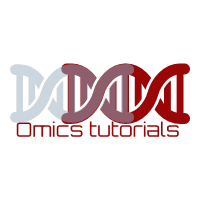
Bioinformatics glossary – H
November 9, 2018A | B | C | D | E | F | G | H | I | J | K | L | M | N | O | P | Q | R | S | T | U | V | W | X | Y | Z
Bioinformatics glossary – H

Hairpin
A double-helical region in a single DNA or RNA strand formed by the hydrogen-bonding between adjacent inverse complementary sequences to form a hairpin shaped structure.
Haploid
A cell or organism containing only one set of chromsomes without the homologous pairs. (cf. diploid)
Heterodimer
Protein composed of 2 different chains or subunits .
Heteroduplex
Hybrid structure formed by the annealing of two DNA strands (or an RNA and DNA) that have sufficient complementarity in their sequence to allow hydrogen bonding.
Hidden Markov model (HMM)
A joint statistical model for an ordered sequence of variables. The result of stochastically perturbing the variables in a Markov chain (the original variables are thus “hidden”), where the Markov chain has discrete variables which select the “state” of the HMM at each step. The perturbed values can be continuous and are the “outputs” of the HMM. A Hidden Markov Model is equivalently a coupled mixture model where the joint distribution over states is a Markov chain. Hidden Markov models are valuable in bioinformatics because they allow a search or alignment algorithm to be trained using unaligned or unweighted input sequences; and because they allow position-dependent scoring parameters such as gap penalties, thus more accurately modeling the consequences of evolutionary events on sequence families.
The method by which very large numbers of compounds are screened against a putative drug target in either cell-free or whole-cell assays. Typically, these screenings are carried out in 96 well plates using automated, robotic station based technologies or in higher- density array (“chip”) formats.
HLA complex
Another name for the MHC in humans; refers to the “Human Leukocyte Antigen” complex located on chromosome 6.
Homeobox
A highly conserved region in a homeotic gene composed of 180 bases (60 amino acids) that specifies a protein domain (the homeodomain) that serves as a master genetic regulatory element in cell differentiation during development in species as diverse as worms, fruitflies, and humans.
Homeodomain
A 60 amino-acid protein domain coded for by the homeobox region of a homeotic gene.
Homeotic gene
A gene that controls the activity of other genes involved in the development of a body plan. Homeotic genes have been found in organisms ranging from plants to humans.
Homology
(strict) Two or more biological species, systems or molecules that share a common evolutionary ancestor. (general) Two or more gene or protein sequences that share a significant degree of similarity, typically measured by the amount of identity (in the case of DNA), or conservative replacements (in the case of protein), that they register along their lengths. Sequence “homology” searches are typically performed with a query DNA or protein sequence to identify known genes or gene products that share significant similarity and hence might inform on the ancestry, heritage and possible function of the query gene.
Housekeeping genes
Genes that are always expressed (ie. they are said to be constitutively expressed) due to their constant requirement by the cell.
Human Anti-Murine Antibody Response (HAMA)
An immune response generated in humans to antibodies raised in murine (e.g. mouse or rat) cells.
Hybridization
The interaction of complementary nucleic acid strands. This can occur between two DNA strands or between DNA and RNA strands, and is the basis of many techniques such as Southern and northern blots.
Hydrogen bond
A weak chemical interaction between an electronegative atom (e.g. nitrogen or oxygen) and a hydrogen atom that is covalently attached to another atom. This bond maintains the two-helices of DNA together and is also the primary interaction between water molecules.
Hydrophilicity
(lit. water-loving) The degree to which a molecule is soluble in water. Hydrophilicity depends to a large degree on the charge and polarizability of the molecule and its ability to form transient hydrogen-bonds with (polar) water molecules.
Hydrophobicity
(lit. water-hating) The degree to which a molecule is insoluble in water, and hence is soluble in lipids. If a molecule lacking polar groups is placed in water, it will be entropically driven to finding a hyrdophobic environment (such as the interior of a protein or a membrane).















